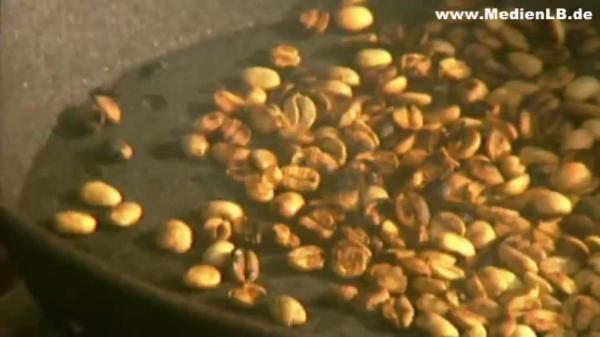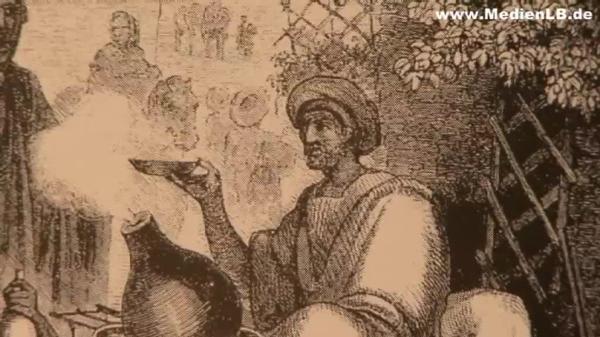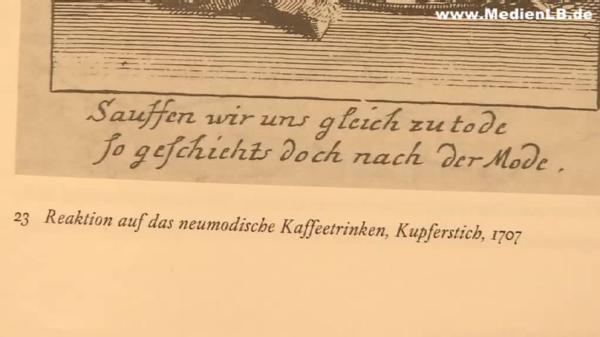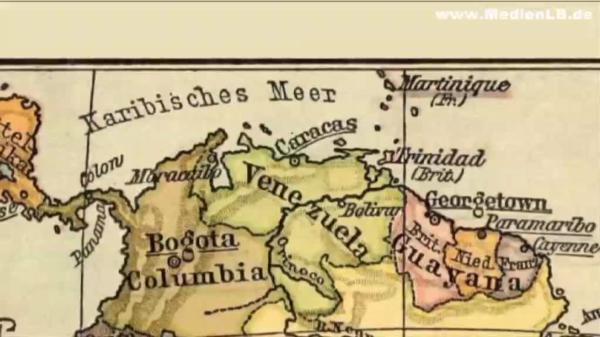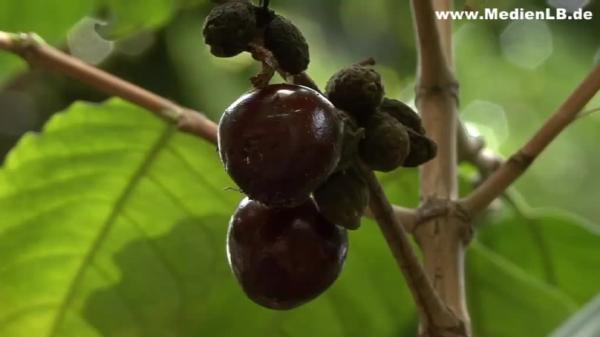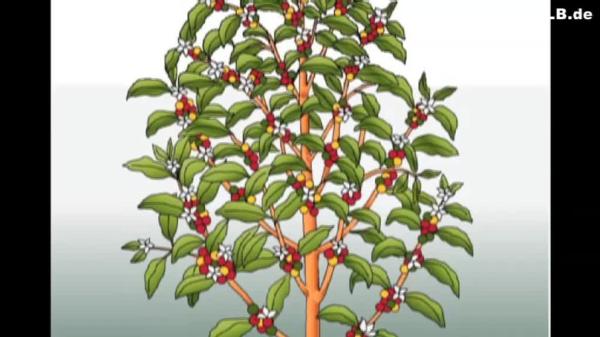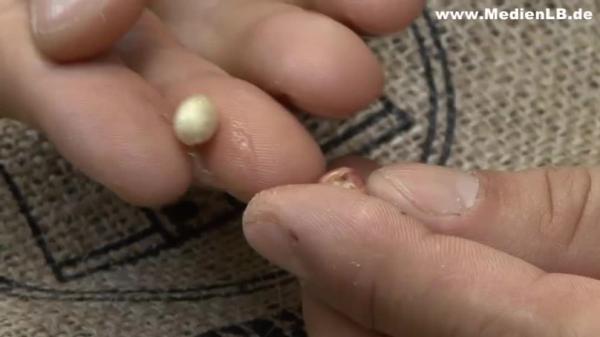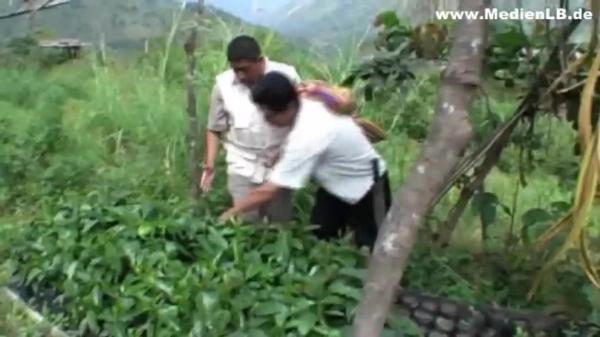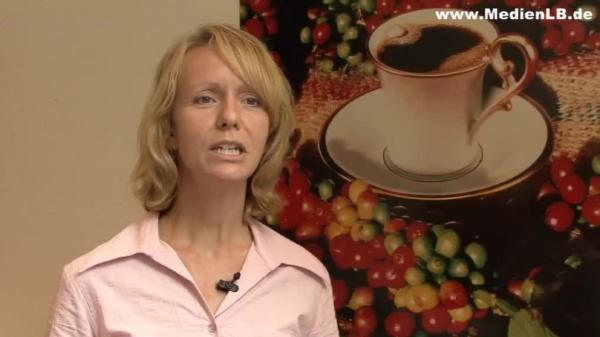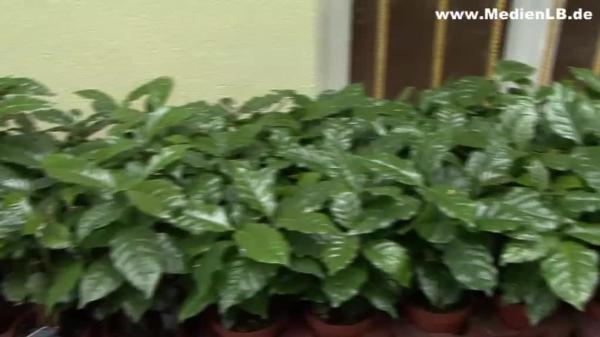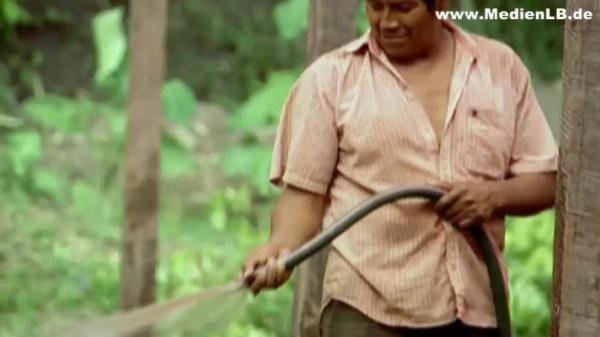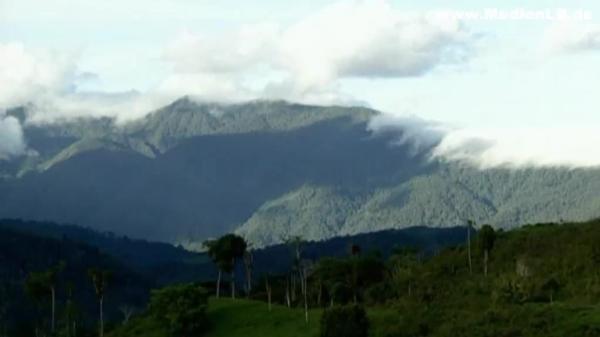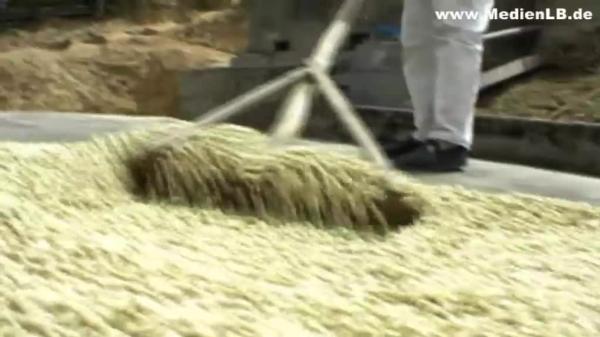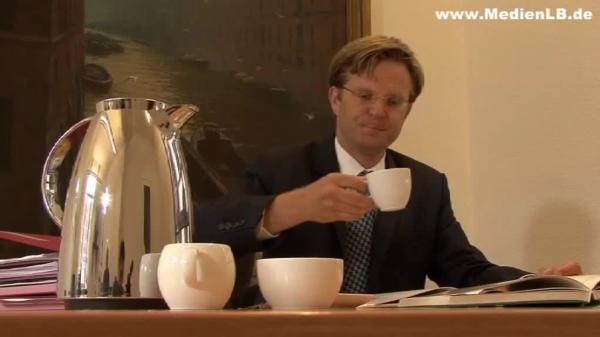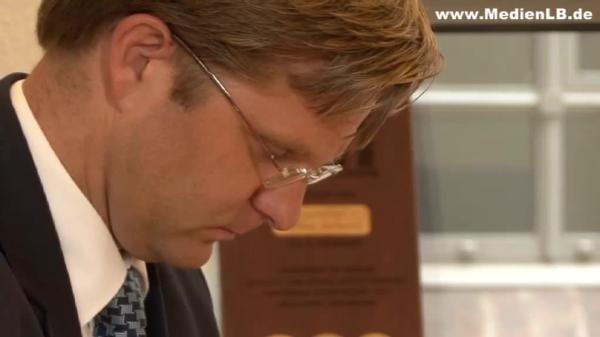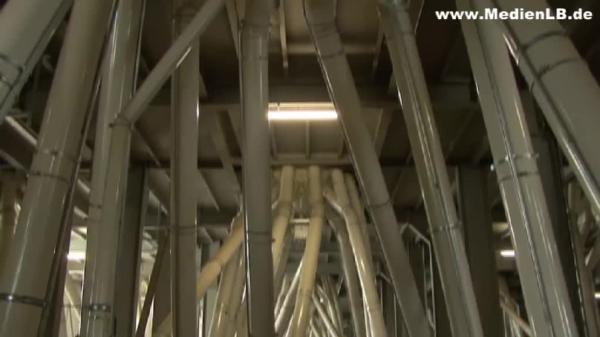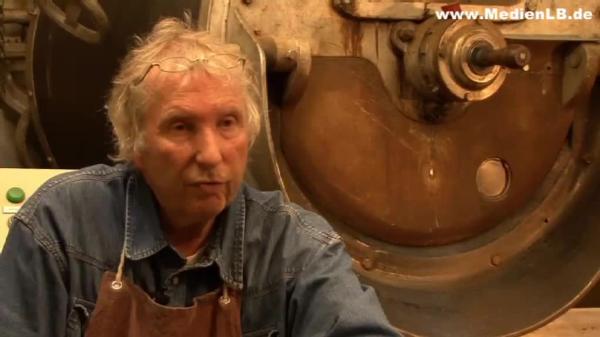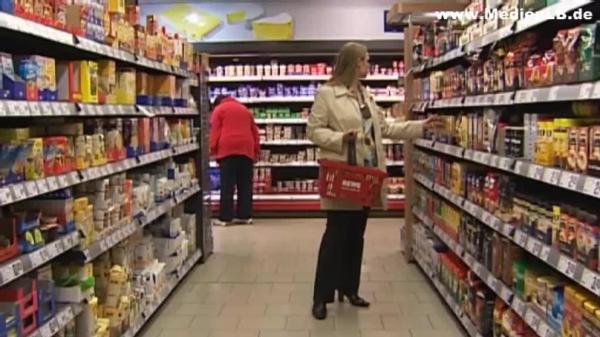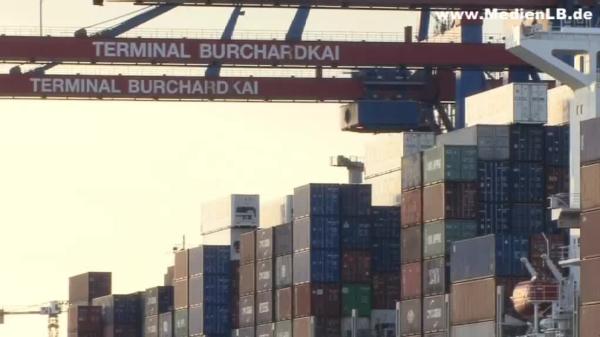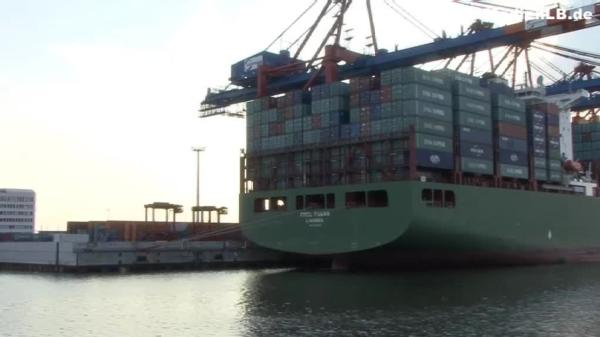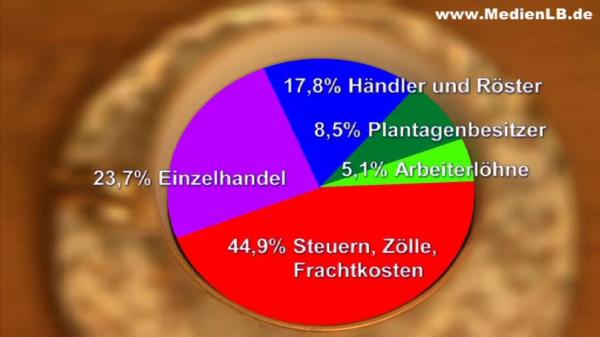Kaffee
Eine Kulturpflanze

Coffee

Original Soundtrack people in the street: “I drink 3-4 double espressos a day.” “Must be around 8 cups I think.” “One large cup – I always take it half and half – half of it milk, the other coffee” “4 cups… 5 cups a day approximately” “One to two cups” “Well, definitely one in the morning – I just feel better afterwards. I need that when getting up or after getting up. And then another at lunchtime. And depending on how much time I got another one in the afternoon.” Coffee is one of the most popular beverages in Germany. On average, Germans consume nearly 150 litres of coffee every year. That makes around four cups a day. Since this beverage is popular not only in Germany but worldwide it has become one of the most important commercial products on the global market. That’s reason enough to take a closer look at the coffee plant and the product gained from it. 1. The History of Coffee 1.1 The Origin of Coffee There are many myths and tales around the provenance of coffee. One of them dates back to the 17th century. It tells the tale of herdsmen in the Ethiopian province Kaffa who complained to the monks that their goats couldn’t sleep at night. The monks found a shrub bearing cherry-like fruit on the goats’ pasture. From these fruit they brewed a beverage and from then on they could stay awake all night and discuss and meditate. In fact, there are a lot of reasons to believe that the coffee plant originated in Ethiopia and the Ethopian Highlands. Coffee as we know it seems to have been drunk in the Arabian world since the mid-15th century. This is documented by an Arabian manuscript from 1587. It was written by Abd-al-Kadir and is kept at the national library in Paris. 1.2 The History of Cultivation in Europe At the beginning of the 16th century coffee is first served in Istanbul. Turkish coffee culture has 150 years to develop before it is even noticed in the rest of Europe. It’s only in the mid-17th century that coffee houses emerge in Europe. The first one opens at St. Mark’s Square in Venice in 1645. From then on the dark beverage begins to conquer Europe: Oxford, London, Marseille, Amsterdam and The Hague. In Bremen coffee is first served in 1673. Here the first German coffee house opens at the Haus Schütting in 1697. How well-received coffee was in 18th century society is shown in the following excerpt from Johann Sebastian Bach’s famous coffee cantata: “Coffee, coffee I must have, and if someone wishes to give me a treat, ah, then pour me out some coffee!” 1.3 The Spread of Coffee Cultivation The coffee boom in Europe produces a steadily growing demand. In Holland in particular some clever business people come up with the idea to cultivate the coffee plant in other colonies as well. That’s how the coffee plant got from the African continent to present-day Indonesia or Sri Lanka, but also to Southamerican Surinam or Martinique in the Carribbean. With the spreading of European colonies the coffee plant also spreads around the globe. In the beginning of the 18th century the first crops are planted in Brazil. This marked the beginning of a real success story. Today Brazil is by far the biggest producer of green coffee in the world. 2. The Botanical Genus of Coffea 2.1 The Coffee Plant The coffee plant is assigned to the family of rubiaceae one of whose genera are the coffea-plants, i.e. coffee. All in all there are around 90 species of coffea plants. However the most commonly cultivated types today are coffea arabica, better known as Arabica coffee and Robusta coffee whose botanical name is coffea canephora. Both species grow on shrubs bearing white blossoms. The leaves of these up to four meter tall shrubs are evergreen and feel leathery to the touch. Their pole-like roots grow up to 2.5 metres into the ground. Their blossoms connect to the fructification containing the seed of the coffee bean and drop off after 3-4 days. A mature shrub bears around 30,000 to 40,000 fruit. At the age of 3 or 4 the shrubs will yield their first crop. 2.2 The Fruit In its last stage of maturation the fruit of the coffee plant resembles a cherry. That’s why it is called coffee cherry. It takes between 7 and 9 months to mature after fertilisation. During this time its colour changes from green to yellow to red. Inside the fruit two seeds develop into stones – these are the coffee beans. The coffee beans sit with their flat sides together. They are easily recognized by the groove that runs along their entire inner side. They are protected by a thin shell, the silver skin. 2.3 Cultivation The coffee plant is a rather demanding shrub. Temperature, rainfall, soil conditions and altitude – all of those have to be just right. That’s why it grows naturally in the belt marked by the tropics. To cultivate this plant a mean temperature of 18° - 25° C is nessecary. Frostproof this plant is not. The regions in which the two most frequently cultivated types Arabica and Robusta are grown differ mainly in their altitudes. Most Arabica plants grow at an altitude of 600 – 1200 metres, Robusta plants grow at 300 – 800 metres above sea level. Arabica and Robusta make up more than 95% of all the coffee grown worldwide. 60% of the global coffee production is supplied by the Arabica plant. It’s cultivated mainly in Latin America, East Africa, India and Papua New Guinea. Around 35% of the global coffee production is supplied by the Robusta plant. Robusta is mostly cultivated in Brazil and West Africa, but also in countries such as Uganda, Indonesia or Vietnam. Worldwide there are around 14 billion plants of both types. 2.4 What is in a cup of coffee? Coffee is mainly drunk because it is said to have a stimulating effect. Over 80% of people who drink coffee have theirs in the morning. Yet the main ingredient of coffee is water which makes up 98% of it. A 150ml-cup of filter coffee contains around 80 milligrams of caffeine. Original Soundtrack Birgit-Christin Wittek, Nutritionist “So there are hardly any carbohydrates or fatty matters, these mostly remain in the coffee grounds. A characteristic of coffee are the acids and its flavouring substances. There are 4-5% of acids in a cup of coffee, mostly chlorogenic acid. The flavouring substances are mainly a product of the roasting process and amount to 1gr. per litre. That makes coffee one of the most aromatic foodstuffs. Then there are also minerals, they make up around 3-4%. And interestingly enough, coffee contains more antioxidants than a glass of orange juice. Antioxidants are substances in our bodies that protect our cells.” Today, we are aware of more than 1000 chemical compounds contained in coffee. Around 800 have been discovered so far. This means there are still a few secrets to find out about coffee. 3. Production and Processing 3.1 The Coffee Plantation Just as shown here the coffee plant is mainly cultivated by sowing seeds. Coffee beans are put into seedbeds. Five to six weeks later the plant will have developed its first pair of leaves. The hardy seedlings are repotted. In these pots they are then kept in so-called nursery beds to grow for 8 more months. After this period the young coffee plants are planted into the ground with a one to four metre gap between them. After an average of about 4 years they will yield their first crop, after around 8 years they will have reached their maximum productivity. After twenty years the crop will begin to diminish again. New plants will have to be cultivated, the cycle starts anew. To obtain a maximum of crops from each plant and to be able to harvest the crop more easily, the plants are constantly trimmed to a height of two metres. 3.2 The Harvest It takes quite a long time for the fruit to mature so it can be harvested. Arabica plants take six to eight months, Robusta plants nine to eleven. Usually there is one harvest a year: between September and December north of the equator and between April and August south of the equator. The rather long period of harvest is due to the fact that the time it takes for the individual fruits to mature can vary. The mature cherries are picked by hand in most coffee producing regions. This so-called picking method guarantees a particularly good quality of coffee beans, since only the ripe fruit are picked. Also, many of the producing regions are fairly inaccessible so that the use of machines wouldn’t be worthwhile. Depending on the accessibility of the area a picker can pick 50 – 100 kg of coffee cherries a day. If the cherries are stripped from the shrubs by machines or by hand irrespective of their stage of maturity the quality will suffer. For the growers this so-called stripping method is often the only profitable method of production. The coffee cherries have to be processed into green coffee soon after harvest as they are perishable. 3.3 The Processing into Raw Coffee To get to the precious inner of the fruit – the coffee beans – everything surrounding them including fruit pulp and hull has to be removed. There are two ways of doing this: the wet dry process and the wet process. For the dry process the coffee cherries are simply dried in the sun. They need to be raked regularly to ensure they dry evenly and to prevent mildew. The beans inside also have to dry completely. They can then be easily peeled out of their husks. This usually takes between three and five weeks. The wet process is a lot more elaborate than the dry process, but it’s also quicker and finished after only two weeks. However for this a lot of water is needed – between 130 and 150 litres for every kilo of green coffee. In various stages the coffee cherries are washed, then pressed through machines without crushing the beans then washed again. The remainder of the pulp still clinging to the beans is removed by fermentation. The remaining mucilage can be rinsed off easily. Then the beans are dried for two weeks in such places). As with the dry process the wet-processed green coffee retains around 12% moisture. Since there is a water shortage in many producing regions, the coffee cherries are more and more often processed using a combination of wet and dry process. During the semi-dry process the pulp is also crushed by machines and rinsed off. It makes do without the complicated process of fermentation though. The coffee beans dry with the remaining pulp sticking to them. That saves a lot of water and is considered a more ecological alternative to the wet process. After drying the coffee beans have to be peeled to remove the parchment and the silver skin. This is done in mills like these. The dry coffee beans are centrifuged and the husks split open. Then the beans are polished. They are graded according to size and quality and are moved to large silos. Now the green coffee is ready for the next stage of processing: roasting. 4. Distribution and Processing in Germany 4.1 Trading in Raw Coffee Around 95% of the green coffee produced worldwide is exported. But before the green coffee from the producing countries can reach us hear in Germany to be processed further ist has to be traded first. Holger Preibisch can tell us exactly how this works. He is the secretary general of the German Coffee Association. He represents the companies of the German coffee trade and industry, which have achieved a turnover of 4.25 billions Euros in 2006. Original Soundtrack Holger Preibisch, Secretary General of the German Coffee Association “The ICO is the international coffee organisation, a federation of coffee exporting and coffee importing countries. That is, the countries that grow coffee – Brazil and Colombia are members, but also the traditional coffee consuming countries such as Germany, France, the USA and Canada. The aim is to jointly improve the quality of coffee, (the aim is) to gather information about the expected crop yield. In the beginning of the ICO there were certain quotas for coffee. The coffee market used to be rigidly regulated by the ICO, only specified countries were allowed to export specified quantities of coffee to other specified countries. Fortunately, today we have a free market that allows pricing to the advantage of all parties. The coffee growers can price their product on the basis of its actual value and the roasters can pay the price usual in the market.” However, the green coffee has to be shipped to the importing countries first. A shipment from the ports of South America to Hamburg takes three to four weeks. 4.2 Storage and Delivery Nowadays most of the green coffee is transported as bulk freight in containers. Once the freight has been unloaded it is examined by storekeepers. Samples are taken and tested to check the quality of the goods. If it’s in good order then the coffee is reloaded. Generally it is poured into large silos and stored there. Then it is taken to the next place of processing, the roaster. By the way, the green coffee remaines sealed until the load is opened at the roaster. Only then customs duty and import sales tax become due. This means that theoretically the green coffee remains in an area outside of our customs and tax area for as long as the seal is intact, even though it has been in Germany for some time already. 4.3 Roasting and Grinding Once at the roaster, the green coffee has to be cleaned again before it can be stored in silos such as these. Then it can finally be roasted in a roaster. Wilhelm Meier oversees this process. He has been working here in Hamburg for one of the largest roasters in Europe for over 20 years. Wilhelm Meier knows about the art of roasting. Original Soundtrack Jens Burg, Rösterei Burg, Hamburg “The coffee beans are green and are roasted at a temperature of 200° C for 20 minutes. During the roasting process their ingredients undergo a change. Coffee consists of around 1000 flavours which have not yet been analysed – this is where these develop. The sugar undergoes structural changes, so do the proteins, the oils and when just before the end of the roasting process the beans start to crack, their essence has changed so far that the coffee will get its nice brown colour and we have to catch the exact moment to transfer it to the cooler so that eventually the coffee will taste like coffee.” The roasted beans which are to be used for grinding are transported to the grinder on such conveyor belts. Here the coffee is ground and then stored in these storage containers. Now the ground coffee as well as the whole beans can be packaged. 4.4 Packaging Coffee is packaged in these so-called packing stations. The packaging has to be such as to ensure that the coffee will stay fresh for at least 18 months. For this the coffee has to be protected from exposure to oxygen in particular. Oxygen destroys the coffee’s aroma. The most common method of packaging today is vacuum packaging. In its packaged state the coffee – ground or whole beans or even as instant coffee – finds its way onto the shelves of supermarkets or bakeries and from there to the consumer. 5. Trade and Globalization 5.1 Coffee as a Commodity Coffee is the second most important trade and export commodity right after crude oil. And right behind the USA and Brazil Germany is one of the most important markets for coffee. The German coffee trade had a turnover of 4 billion Euros in 2006 alone. More than half a million tonnes of green coffee are processed in Germany per year. The port of Hamburg is the most important reloading point for green coffee not just in Germany but worldwide. The economic value of coffee is enormous. The government participation in the coffee trade alone is around one billion Euros per year. Coffee is cultivated in more than 80 countries around the world today. Around 50 of these produce coffee in quantities of economic significance. The quantities of green coffee produced are still calculated in sacks of 60 kilos. The biggest producers of green coffee are Brazil with more than 35 million sacks p. a., Vietman with more than 12 million sacks and Colombia with something over 11 million sacks. These three coffee giants are responsible for around 50-60% of all the coffee produced worldwide. Only Papua New Guinea with 6 million, Indonesia with almost 5 million and Ethiopia with 4.5 million sacks p. a. are at least partly able to keep up. 5.2 Drop in Prices and Coffee Crisis in 2001 Towards the end of the 1990s the price of coffee kept falling. Original Soundtrack Holger Preibisch, Secretary General of the German Coffee Association “Excess supply lead to a decline in prices. The decline in prices lead to the coffee growers producing coffee of lesser quality. Coffee of lesser quality was more difficult to sell to the roasters – those paid lower prices – and thus the downward spiral was complete. Consequently coffee prices dropped significantly.” These developments lead straight to the coffee crisis in 2001. On average 500g of coffee cost 3.28 Euros that year. This had a devastating effect on the coffee farmers in particular. Original Soundtrack Holger Preibisch, Secretary General of the German Coffee Association “The reason for the decline in coffee prices in the 90s was an oversupply of coffee on the global market due to more countries which had previously had nothing to do with coffee cultivation entering the market. Vietnam for example – 15 years ago it had never produced coffee and how it’s the second biggest producer of coffee after Brazil.” Meanwhile the coffee price has stabilized due to increased demand and less overproduction. 5.3 Fair Trade Today, the coffee price is added up as follows: Almost 45% are made up of taxes, customs duty and freight costs Around 24% go to the retailers. Wholesalers and roasters keep roughly 18% More than 8% go to the plantation owners At the end of the chain there are the workers. They only receive 5% of the price we pay for coffee. Since the producing countries usually profit least from the coffee price, more and more so-called non-governmental organisations push for a fair trade. Like Oxfam Germany for example. This organisation supports projects in the producing countries to ensure that the farmers get more money for their coffee. Managing director Paul Bendix explains how this works: Original Soundtrack Paul Bendix, Oxfam Germany e.V. “We’re a global organisation that does not engage in trade itself. We make deals with companies that have to adhere closely to our rules. These include a minimum price, a transfer surcharge and of course implementation of control, which means that everyone involved from the coffee grower to the roaster is being monitored as to whether they comply with the criteria of the agreement. And this is what transfair does. We don’t trade in coffee, but we lay down the ground rules and supervise. For each pound of coffee those farmers who have joined cooperatives receive around 1.50 Euro – that’s a price they wouldn’t get on the global market – and it’s a price they can count on and therefore invest in their projects, move independently on the global market, the term for this is Empowerment – this means that the farmers are being empowered so they are able to participate actively and independently in the global market.” Currently however Fair Trade coffee makes up only one percent of all the coffee sold in Germany. Original Soundtrack people in the street: “I always add a drop of milk – cream that is, not UHT or stuff like that and now and again a cube of sugar.” “I always take it with milk and sugar.” “Coffee with milk.” “Usually I drink espresso of coffee black, no sugar.” “Espresso, a cappuccino, a latte macchiato every now and again, but in general I take my coffee black.” “Black with sugar, preferably from an espresso machine, light coffee, and if possible never coffee that’s not fresh.” Coffee is prepared in a multitude of ways. Very popular is the cafe au lait, a double espresso with lots of steamed, frothed up milk. Or the café latte, a strong espresso with steamed milk but without froth. The list could be continued endlessly adding café creme, café correto, café corto, café doppio, café frappé or café lungo. The most popular coffee is still the filter coffee made at home. Boiling water is filtered drop by drop through the filter bag containing the ground coffee.


